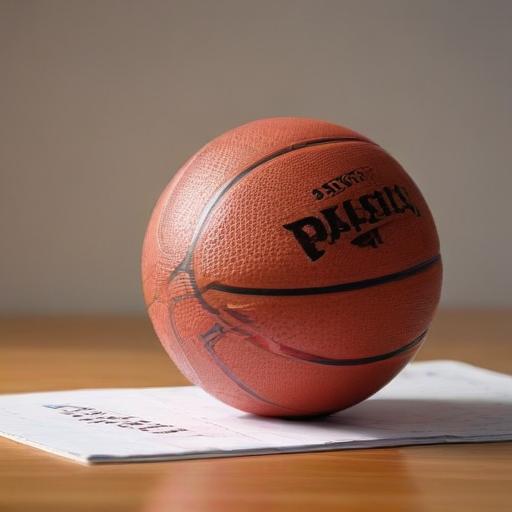The 2025 WNBA trade deadline on August 7 didn’t produce any seismic, league-changing blockbuster moves, but it offered a clear window into how teams are balancing present contention with long-term planning. Between CBA negotiations, looming expansion, injuries and a deep 2026 draft class, front offices largely prioritized roster fit, cap flexibility and draft assets over headline-grabbing swaps. Five teams were most active, and their moves reveal distinct trajectories — from Minnesota’s win-now push to Connecticut and Washington’s youth- and asset-first approaches.
Grades and takeaways
Minnesota Lynx — A
The Lynx made the most decisive deadline move, acquiring DiJonai Carrington from Dallas for Diamond Miller, Karlie Samuelson (later waived) and a 2027 second-round pick. Carrington, the 2024 Most Improved Player and an All‑Defensive First Team selection, upgrades Minnesota’s perimeter defense and energy at a time when the team (26‑5 at the time of the deadline) is fully in championship mode. Offense isn’t her calling card, but her defensive fit and hustle make this a near-flawless, low-risk/high-reward move for a contender seeking to protect leads and shut down opposing wings.
Seattle Storm — B+
Seattle landed Brittney Sykes from Washington in a trade that sent Alysha Clark, Zia Cooke (subsequently waived) and a 2026 first-round pick to the Mystics. Sykes (about 15.4 PPG, 4.4 APG and strong defensive recognition this season) brings two-way versatility and perimeter defense that fills a clear need alongside Skylar Diggins and Gabby Williams. Given Seattle’s tight cap picture, the cost — two role players and a mid-to-late first-rounder in a winning season — was reasonable. The key watch: how quickly Sykes integrates into Noelle Quinn’s spacing/pace system and whether she can be an effective third/fourth option while anchoring perimeter defense.
Washington Mystics — B
Washington’s deadline strategy tilted toward future flexibility and youth. They traded Brittney Sykes to Seattle for veteran Alysha Clark (low-usage veteran), Zia Cooke (waived) and a 2026 first-round pick, then flipped forward Aaliyah Edwards to Connecticut for guard Jacy Sheldon and rights to a 2026 first-round pick swap. Sykes was a meaningful scorer and defender this season, but the Mystics cashing in for picks, a veteran presence and a young guard in Sheldon signals a rebuild posture focused on cost control and developmental timelines. The moves give Washington more draft optionality and a younger backcourt core to build around.
Connecticut Sun — B
The Sun made a single, targeted move, acquiring Aaliyah Edwards from Washington. Edwards — the No. 6 pick in 2024, averaging roughly 6.1 PPG and 3.3 RPG as a rookie — offers strength, rebounding and upside as a young post player. Connecticut’s objective appears to be accumulating young, coachable pieces while preserving cap and draft flexibility; Edwards fits that mold. The inclusion of a 2026 first-round pick swap in the prior Washington-Connecticut transaction also provides optionality that could pay off if Washington’s rebuild falters next season.
Dallas Wings — C+
Dallas dealt DiJonai Carrington to Minnesota and received Diamond Miller and future assets in return. The Wings extracted future value for a player whose offense hadn’t yet fully materialized, but the team still faces internal pressure — fan unrest and coaching scrutiny amid inconsistent results. Banking on Miller and draft capital is sound for a patient rebuild, but Dallas will need to manage expectations, stabilize the locker room and develop Miller into a cornerstone if the transaction is to be viewed positively long term.
Context and implications
– Front offices emphasized balance: most teams preferred moves that preserved cap flexibility and future draft capital rather than mortgaging the future for immediate star power.
– Playoff race and the 2026 draft influenced decisions: contenders like Minnesota made win-now upgrades, while teams out of contention prioritized prospects and pick assets.
– Expansion and the CBA landscape likely encouraged conservative, asset-focused trades, as teams prepare for roster churn and increased competition for talent.
What to watch next
– How quickly Sykes acclimates to Seattle’s system and whether she can be a defensive stopper while contributing offensively in a reduced usage role.
– Carrington’s impact on Minnesota’s playoff defensive identity and whether her presence tightens matchups for the Lynx on the perimeter.
– Aaliyah Edwards’ development trajectory in Connecticut — can she translate college promise into consistent WNBA minutes and become a long-term starter?
– Diamond Miller’s growth in Dallas and whether the Wings can translate future assets into tangible roster improvements while calming the fanbase.
Short summary
The 2025 WNBA trade deadline was more an exercise in strategic roster management than dramatic star swaps. Minnesota made the boldest, most immediate upgrade by adding elite perimeter defense in DiJonai Carrington. Seattle’s acquisition of Brittney Sykes strengthened its two-way wing depth. Washington, Connecticut and Dallas focused on youth, flexibility and draft assets, signaling divergent timelines across the league.
Additional comments and hopeful outlook
These trades reflect a maturing league where teams are increasingly thoughtful about roster construction, balancing short-term aims with long-term stability. That balance should lead to more competitive playoff series and better developmental paths for younger players. Fans should be excited to watch how these roster changes influence the late-season push and which young pieces — Edwards, Sheldon, Miller — take meaningful steps forward. If teams successfully integrate their new pieces and maintain clarity in their timelines, the next 12–18 months could produce both tighter title races and clearer contenders for the post-expansion era.
